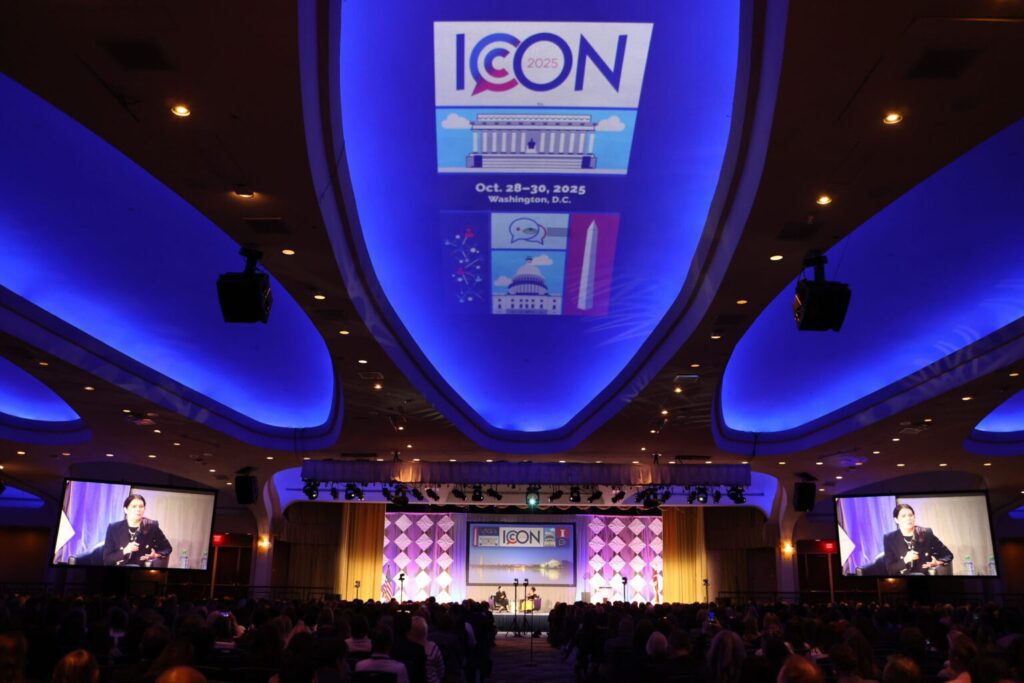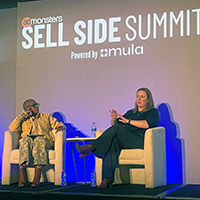As the economy continues to build muscle and the job market eases, employee performance recognition incentive programs will be ever more valuable to companies looking to hang on to top performers and improve the bottom line. The industry has plenty to smile about. New research supports existing studies showing that incentive programs really do work and technological advances have eased program costs and allowed for better communication both internally and externally.
 |
| Michelle Smith |
Michelle M. Smith, CPIM, VP-business development at OC Tanner, a provider of employee recognition programs based in Salt Lake City, UT, spoke with PROMO P&I about what this year is likely to bring.
PROMO P&I:
What trends do you see emerging this year in performance recognition incentive programs?
SMITH: The biggest trend is that there is a much greater focus on measurement in recognition and incentive programs. Companies are looking to reward very quantifiable, measurable, actionable behaviors of their employees, dealers, suppliers or customers. We’re seeing a lot more metrics introduced into the program structure and a real focus on tracking results and being able to report on how the program is performing throughout the course of the program, rather than waiting until the end to assess results.
PROMO P&I:
What has prompted this change?
SMITH:? The introduction of technology a few years ago has enabled us to do so much on the tracking and reporting side, which was sorely lacking in our industry for a long time. We used to run programs and say ‘we think it hit the mark and it was a success’, but most people didn’t track and measure the results so they couldn’t unequivocally say this was an all out success. We learned the lesson the hard way with senior management—if you couldn’t quantify your program results, often times your promotion and incentive budgets were cut or eliminated completely. This trend is gaining momentum as more companies need to quantify their results so they can say with certainty what the results were, what worked well and what opportunities for improvement could be achieved in the next program.
PROMO P&I:
Has this emphasis on metrics affected both sales incentive programs and performance and recognition incentive programs?
SMITH: Sales incentive programs have been pretty clear and numbers driven for a long time; do X, get Y. They’ve always been very focused on measurement, usually on revenue growth or sales. Performance and recognition programs have traditionally been more discretionary. You catch someone doing something right or above and beyond the call of duty, and recognize and reward them. Now those programs are becoming more focused on very specific corporate goals or initiatives. Additionally, metrics allow you to quantify the end result and also affect the results by tracking how the program is doing throughout its course. With an effective tracking mechanism, you can intercede if one area is not performing as well as the others and provide extra training to that area. Or, you can spread the word about a really successful department or initiative so that everyone else can benefit from that example. With metrics in place, companies are much more engaged in their programs. They can see the progress throughout the program with an understanding of what they want to accomplish and how they know when they’ve succeeded. Incentive and recognition performance programs are really starting to grow up. There are much more thoughtful, strategic business decisions being made about what the programs should focus on, what is realistic and how to specifically accomplish that goal.
PROMO P&I:
There has long been a focus on incentive programs for employees that drive revenue, but there seems to be growing interest in performance and recognition programs. What is driving that?
SMITH: Nowadays, companies are much more aware of all the contributors to sales revenue increases or corporate success and are implementing performance and recognition programs to help align and recognize those employees for their contributions to those successes. Not that long ago, a company would want to drive revenues and just ask for a sales incentive program for their sales reps. If you don’t include the sales support people are you really getting the biggest bang for your buck? Are you really getting everyone singing off the same page or is there a disconnect? I’m thrilled that employers have realized that everyone in the company—not just the sales team—can contribute to revenue growth and operational efficiencies that help a company prosper. The growing interest in performance and recognition programs reflects that management realization and their desire to recognize those additional contributions.
PROMO P&I:
Over the last year or so important research has been released by very credible sources, including the Forum for People Performance Management and Measurement at Northwestern University, who reported that a direct link exists between employee satisfaction, customer satisfaction and a company’s financial performance, even if the employees have no direct contact with customers. How has this research impacted the industry?
SMITH: The research has brought what we just talked about to the attention of business leaders and helped them to realize that many more people in their company than they may have initially expected are affecting the organization’s financial performance. Now it’s no longer just Michelle at OC Tanner saying ‘trust me this is the right thing to do for your business’; it’s Northwestern University saying that recognition and incentive programs are more than a nice thing to do, but an essential business tool to take advantage of to increase your opportunities for success. Over the last couple of years, companies have been looking for every possible advantage they can get in the marketplace and now we’ve got the research results that demonstrate that companies who engage in incentive marketing and recognition programs are significantly outperforming their competitors who don’t run programs. It’s very, very powerful when you can talk about real bottom line savings, contributions to the profit line and shareholder value with clients. We’ve not had the opportunity to have conversations like that before the research came out and those kinds of results grab clients’ attention and increase their interest in utilizing programs.
PROMO P&I:
In what other ways are companies using technology to enhance their sales and performance incentive programs?
SMITH: Companies are consolidating many of their programs to decrease costs and increase effectiveness. Instead of having 12 different programs, they’re pulling them together into one corporate-wide program with lots of sub-programs and variations to address the specific needs of different business units or geographical locations. This consolidation helps strip out cost and administrative burden from the programs while insuring a unified message and application of the program. We’re also seeing much more interest from U.S. multinational companies to rollout programs internationally. Technology has created the vehicle to communicate easily across boarders and companies are excited about being able to offer something better than a watered down version of their U.S. program—the brands and types of awards offered in international programs need to be compelling and relevant in those countries.
PROMO P&I:
What types of concerns are companies raising about these types of programs?
SMITH: What we hear the most is the lack of consistency within programs companies have designed and are administering on their own. For the exact same behaviors, someone in one department will get one type of award while someone in another department will get a very different award. This creates discontent and can really derail the success of your program because people become confused about what it is you’re trying to accomplish.
The second biggest concern companies are raising is the lack of visibility into the program spend. Many companies are spending a small fortune but can’t tell you where the money went or for what achievement someone was rewarded. These ailments are the result of poor program design initially and not leveraging technology to provide the communication and tracking tools needed to successfully overcome these concerns and know exactly where and how your investment is being spent.
PROMO P&I:
What is the best way to overcome these inconsistencies?
SMITH: Marry internal and external branding to improve consistency and track your results as you go along. If you want employees to understand the right corporate messages and to treat your customers the right way, you have to set the example by making sure they have that message and they’re treated with the same care and respect you want them to demonstrate to customers. There’s no better vehicle for a CEO to communicate what’s important to the company and all the stakeholders associated with that company than to recognize and reward people for the behaviors and results that drive the company towards success. Once that message is firmly established and reinforced with awards, my advice would be to fully utilize the wealth of tools that are available in recognition programs today to measure your progress along the way, make the necessary course corrections where needed, and keep your program firmly headed for success.
Smith has 27 years of experience in the incentive and recognition industry and has worked in every facet of the industry. She is an international speaker and writer on a variety of human capital management and performance improvement topics, and serves on the boards of several industry organizations.



